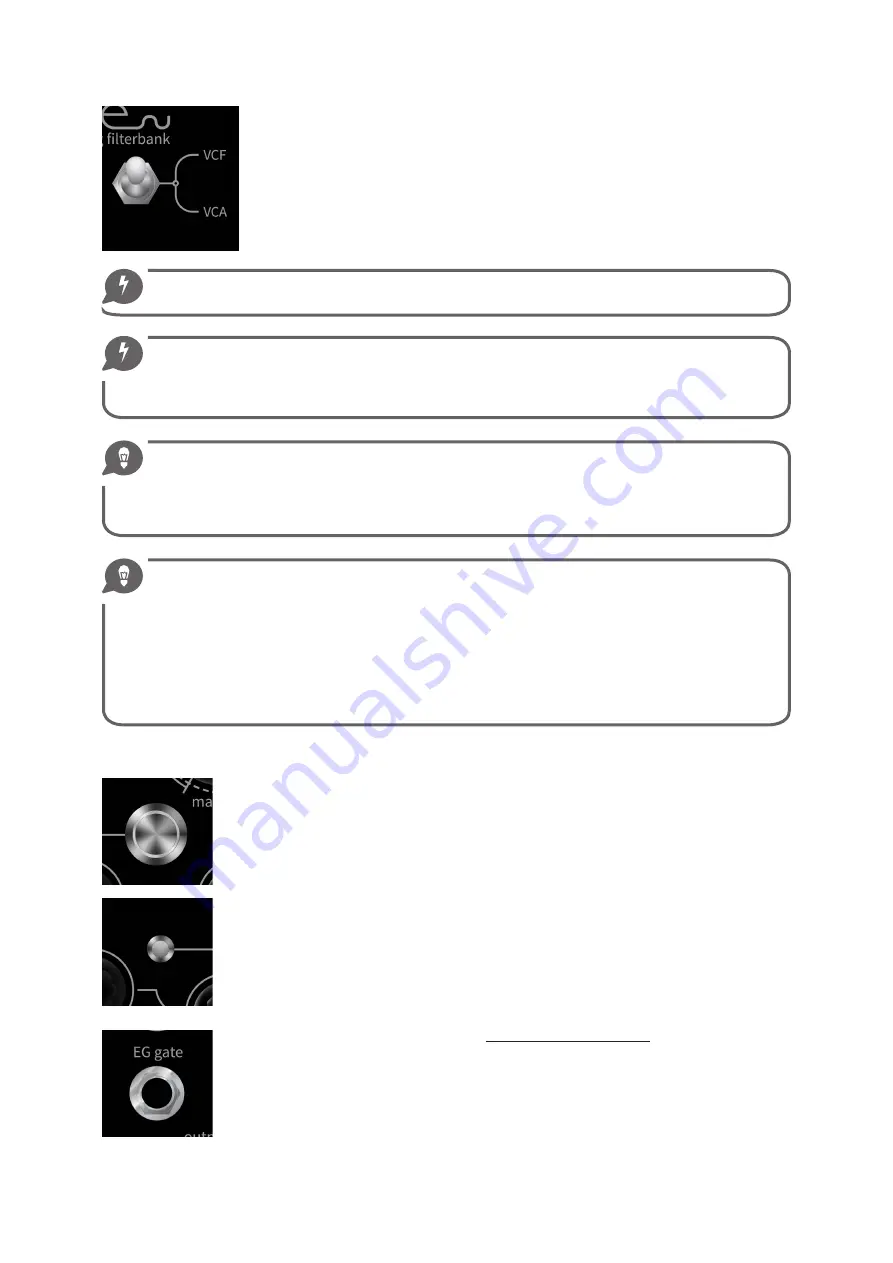
The anti-vandal high-end super-professional
Trigger button. It's a simple on/off momentary
switch for the Envelope Generator mechanism (but costs like a Mercedes) and it acts exactly
like a pressed CV-keyboard key. So for this command every recommendation made about
the reaction of the EG are absolutely true and effective.
The fashionable old style
LED
is the only visual indication about the EG work status.
This LED monitors the CV emission of the Envelope Generator. Or, in another way, it shows
how it works and if there is output signal (the LED is positioned after the EG out level
circuitry in order to visually show also the output level of EG). If there isn't an external GATE
or if you do not push the Trigger there are no chances to see something work unless you
make it loop or you invert the output phase. Raise EG lev to obtain more light for nocturnal
promotional shooting in the studio.
The
Gate
input port allows you to obtain one of the most important and musical functions
of the filterbank: it makes the MCƒ or the Staccato/Continuo playable by any CV coming
from a CV emitting keyboard, module or synth. Some modern analog synths like Moog
Voyager or Arturia Minibrute can produce standard GATE CV signal via dedicated port. In
most modular Eurorack or MU structures there is almost always one MIDI to CV module so there
are good chances that you can use this function. It is strongly recommended to try it also with
audio material like drums loops, gated synth or wathever, that can give consistent MC
f
movements,
Compression, pumping side-chain effect and Expansion (
page 57).
Achtung! When you patch the rear EG out into the AM input port please remember that the VCA is
extremely dynamic and sensitive to CV. So, for example, avoid to doubling the EG signal to the VCA
module via rear port + panel switch. It probably will be musically pointless and eventually dangerous for
circuitry. If you want to do it please don't insist too much and don't leave the unit alone like that for hours.
J.S.Bach Tones
The VCA has been labeled
STACCATO/CONTINUO
surely to remember the old times when the music
spoke Italian. In
STACCATO
position, however, you can really get out classic tones. Simply route the EG to the
VCA manipulating the
Cutoff
in order to obtain an attenuation of the high frequencies of an harmonic-rich
timbre, such as a sawtooth, play some baroque line and you’ve just become Wendy Carlos! :-)
False-Delay
You can also obtain a very funny “True-Analog False-Delay” with a simple arrangement: just take a +/-
5V LFO in saw position and plug it into the
MasterCƒ CV input
. Then use the internal EG to play the
STACCATO
mode with the following settings:
A = close to zero
D = enough to obtain a slow percussive behavior, slower than the MasterCƒ external CV
S = zero or close to
R = to taste
EG LEV = enough to play staccato. Enjoy!
VCF/VCA switch.
The way to route your EG output signal.
VCF means
Master Cutoff
and VCA is the
STACCATO/CONTINUO
pot instead. By using this
selector you can send the EG's CV to the three filters (actually the MCf) or to the two
VCAs, labeled as Staccato/Continuo. Obviously there is no possibilities to not route the
EG into one of this module without using the EG level attenuator fully counterclockwise,
which can be seen like the “third option”: the unconnected setting.
VCF or VCA
is a really fundamental choice that can be very stunning, and impacting on
sound manipulation.
Use high EG levels carefully with high
STACCATO/CONTINUO
settings: it can be dangerous for your
equipment, for your ears and for you mental health.
[
46
]
the Envelope Generator section
Summary of Contents for Vertice
Page 1: ...USER S MANUAL...
Page 2: ......
Page 5: ...Dedicato a Walt Bruno e Lorenzina con immenso amore Stefano...
Page 68: ...Ratio et Cogitatio Unicam Fidem Sunt...
Page 69: ......
Page 70: ......














































